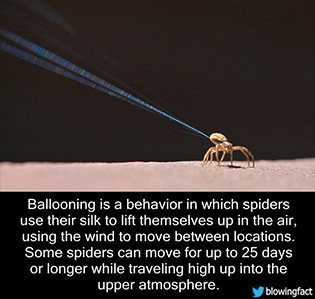When we think about high-flying creatures, airplanes and birds often come to mind. But what about the tiny inhabitants of our world, insects and spiders? Beyond dust, pollen, and storm debris, a hidden world of animals journeys through the sky, unseen by the naked eye, and entirely on purpose. We share our everyday environment with countless insects and spiders, but what happens above our familiar bio zone, where birds and planes soar?
Delving into Insect Altitude Capabilities
Bumblebees have been observed thriving at altitudes exceeding 18,000 feet on Mount Everest and remarkably, can still fly in air pressure simulating 29,500 feet. Termites, too, have been spotted at an impressive 19,000 feet.
 Ladybug catching a current at high altitude to fly
Ladybug catching a current at high altitude to fly
Research from scientists, including Michael Dillon from the Department of Zoology and Physiology at the University of Wyoming, reveals even more astonishing heights. Locusts have been collected flying at 14,764 feet, while true bugs, stoneflies, mayflies, and caddisflies have been found above 16,404 feet. Flies and butterflies have been recorded soaring over 19,685 feet. These high-altitude flights aren’t just random occurrences; they are often part of mass migrations spanning entire countries. These massive movements involve trillions of insects, both predators and prey, significantly impacting ecosystems.
 Spider using silk for aerial dispersal, a form of high-altitude flight
Spider using silk for aerial dispersal, a form of high-altitude flight
Inspired by a National Public Radio segment, “Look Up! The Billion-Bug Highway You Can’t See,” this exploration into insect flight highlights the “invisible highway” above us. Air currents and wind are key factors, enabling even small insects to travel vast distances. Surprisingly, most insects survive these high-altitude journeys without serious harm. This hidden world in the sky is a testament to the incredible adaptability and resilience of insects, sharing the aerial space alongside birds and airplanes.